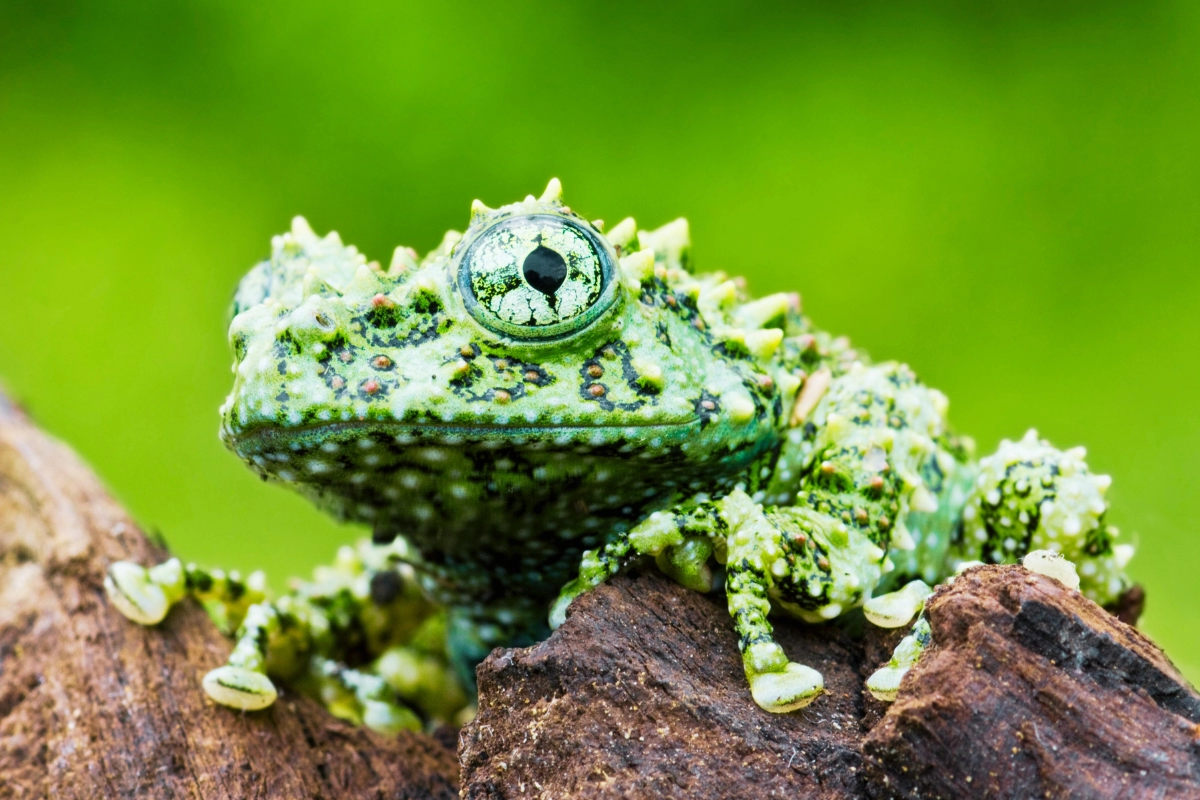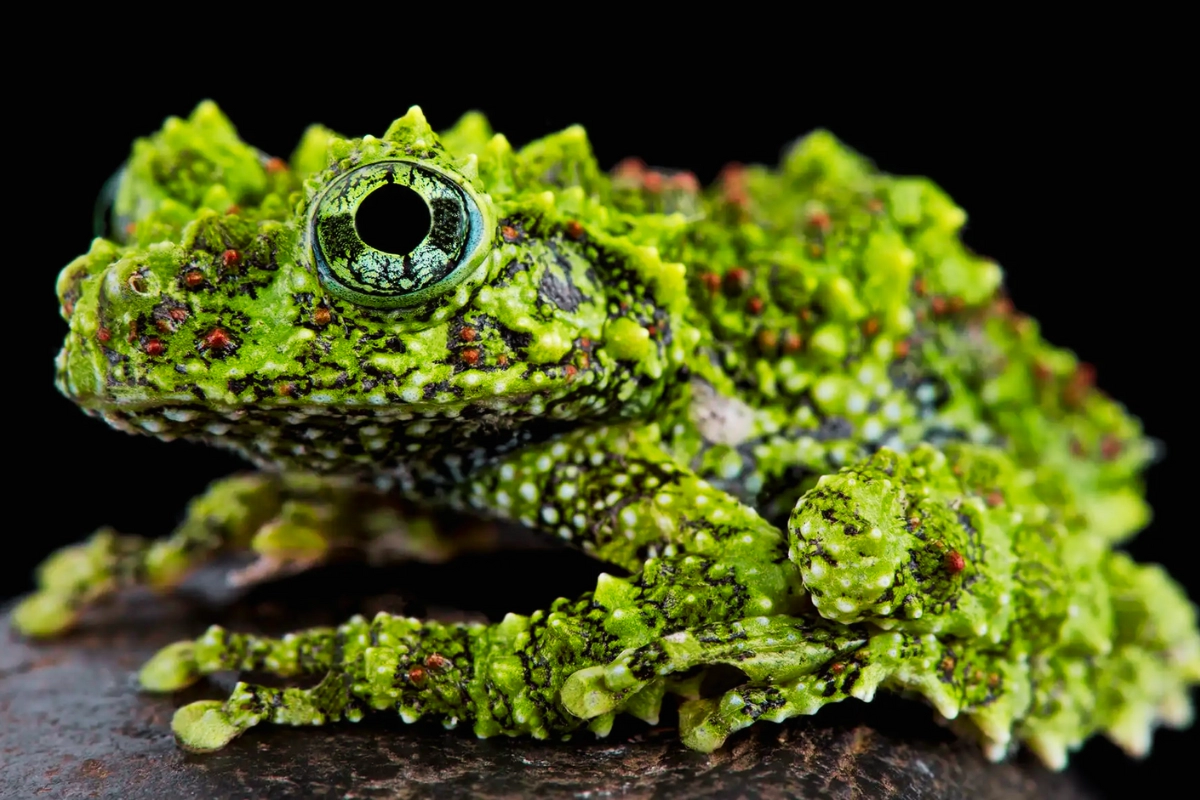Vietnamese mossy frogs are fascinating creatures, known for their unique camouflage. To care for them properly, create a habitat that mimics their natural environment. This means providing a tank with plenty of vertical space, dense foliage, and climbing branches. Maintain a humidity level of 70-90% and a temperature between 75-80°F (24-27°C). Use a shallow water dish and keep it clean, as these frogs enjoy soaking. Feed them a diet of live insects such as crickets and worms. Regular misting and proper filtration for water quality are crucial. Always ensure your frog has a quiet, undisturbed environment to thrive in.
Caring for Vietnamese Mossy Frogs can be an incredibly rewarding experience, offering a glimpse into the fascinating world of one of nature’s most camouflaged amphibians. By following the tips outlined in this guide, you’ll create a thriving environment where your frog can live a healthy, stress-free life. Imagine a beautifully crafted terrarium, lush with greenery, where your frog blends seamlessly with its surroundings, showcasing its unique moss-like appearance.

As a passionate amphibian enthusiast, I understand the challenges beginners face when caring for exotic pets. This guide is designed to simplify the process, ensuring you have all the essential knowledge to succeed. The topic is close to my heart because Vietnamese Mossy Frogs are not only captivating but also vital ambassadors for conservation. I hope to share my insights to help you create the perfect setup and nurture a happy, healthy pet.
To successfully care for Vietnamese Mossy Frogs, you’ll need the following essentials:
- Terrarium: A sturdy glass enclosure with a secure lid, ideally 20 gallons or more.
- Substrate: Moisture-retaining materials like coconut fibre or sphagnum moss.
- Plants and Decorations: Live plants, rocks, and hiding spots to mimic a natural environment.
- Water Source: A shallow water dish or built-in water feature for humidity and hydration.
- Lighting and Heating: UVB lighting and a low-wattage heat source to maintain proper temperatures.
- Thermometer and Hygrometer: To monitor temperature (72–80°F) and humidity (70–90%).
- Diet: Gut-loaded crickets, mealworms, or other small insects for feeding.
- Water Conditioner: To ensure clean, safe water for the frog.
- Cleaning Supplies: Non-toxic cleaners to maintain a hygienic habitat.
Step 1: Set Up the Terrarium
Creating the perfect terrarium is the foundation of caring for your Vietnamese Mossy Frog. Start by selecting a glass terrarium with a secure lid, as these frogs are excellent climbers and escape artists. A minimum size of 20 gallons is recommended to provide ample space for movement and enrichment. Line the base with a moisture-retaining substrate, such as coconut fibre or sphagnum moss, to replicate their natural rainforest habitat. Adding live plants, rocks, and hiding spots is essential to create a sense of security and mimic their natural environment. Include features like bark, cork rounds, or caves for climbing and shelter. Position the terrarium in a quiet, low-traffic area away from direct sunlight and drafts to ensure your frog feels at ease. A properly designed terrarium not only supports the frog’s health but also becomes a stunning display piece for your home.
Step 2: Maintain Proper Humidity and Temperature
Humidity and temperature are critical factors in maintaining your frog’s health. Use a hygrometer and thermometer to monitor conditions inside the terrarium. Maintain humidity levels between 70–90% by misting the enclosure daily with dechlorinated water. High humidity is essential to prevent dehydration and support the frog’s skin health. To achieve optimal temperatures of 72–80°F, consider using a low-wattage heat source or heating pad if the room temperature drops too low. Avoid overheating, as it can be just as harmful as cold conditions. Position the heat source to create a gradient, allowing the frog to move between warmer and cooler areas. Proper environmental controls will ensure that your frog remains comfortable and stress-free.
Step 3: Set Up the Water Feature
A reliable water source is vital for Vietnamese Mossy Frogs, as they spend a significant amount of time in humid environments. Add a shallow water dish to the terrarium, ensuring it is large enough for the frog to soak in comfortably. Alternatively, you can incorporate a small water feature, such as a mini pond or waterfall, to enhance the habitat’s natural appeal. Treat the water with a conditioner to remove harmful chemicals like chlorine and chloramines, as untreated water can be toxic to amphibians. Regularly change the water to prevent bacterial growth and contamination. Additionally, ensure the water dish is stable and easy for the frog to access without tipping. A clean, safe water feature will keep your frog hydrated and happy.
Step 4: Provide Proper Lighting
Lighting plays an important role in your frog’s overall health and behaviour. While Vietnamese Mossy Frogs do not require intense UVB exposure like some reptiles, a low-level UVB light can support their health and encourage natural activity. Set the lighting on a 12-hour cycle to mimic natural day and night conditions, which is crucial for their internal rhythms. Position the light source above the terrarium to provide indirect lighting, avoiding overly bright or direct lights that can stress the frog. Use a timer for convenience and consistency, ensuring the lighting schedule remains steady. Proper lighting not only benefits the frog’s physiological health but also enhances the visual appeal of the terrarium.
Step 5: Feed Your Frog
Feeding your Vietnamese Mossy Frog is a straightforward yet essential aspect of their care. Offer a diet of live insects such as gut-loaded crickets, mealworms, and waxworms. These insects should be appropriately sized, roughly the length of the frog’s head, to avoid choking or digestive issues. Feed your frog in the evening, as they are nocturnal and most active during this time. Provide 2–3 feeding sessions per week, depending on the frog’s size and age. Remove uneaten insects after feeding to maintain cleanliness and prevent stress to your frog. For added nutrition, dust the insects with a calcium and vitamin D3 supplement once a week. A balanced diet will keep your frog healthy and active.
Step 6: Regular Cleaning and Maintenance
Maintaining a clean terrarium is vital for the health of your Vietnamese Mossy Frog. Spot-clean the enclosure weekly to remove waste, uneaten food, and debris. Replace the substrate every month or as needed to prevent the buildup of bacteria and odours. Use non-toxic cleaning products specifically designed for terrariums, avoiding harsh chemicals that could harm the frog. Clean the water dish or water feature frequently to prevent algae growth and maintain water quality. Additionally, inspect the terrarium for any signs of mold or fungal growth, and address these issues immediately. A clean and well-maintained environment will not only keep your frog healthy but also reduce the risk of infections and other health problems.
Conclusion
Did you enjoy this tutorial on how to care for Vietnamese Mossy Frogs? I created this guide because these incredible amphibians hold a special place in my heart, and I wanted to make caring for them approachable for everyone, especially beginners. Following these steps ensures your frog thrives in a healthy, natural environment, while also deepening your connection to these fascinating creatures. If you found this guide helpful, let me know your thoughts in the comments below. Don’t forget to share this article with fellow frog enthusiasts or anyone interested in unique pets. Let’s spread the love for mossy frogs!

FAQ
What size terrarium is best for a Vietnamese Mossy Frog?
A 20-gallon terrarium is the minimum recommended size for one frog. For multiple frogs, a larger enclosure is needed to ensure enough space and reduce stress.
How often should I feed my Vietnamese Mossy Frog?
Feed your frog 2–3 times per week with gut-loaded insects like crickets and mealworms. Adjust feeding frequency based on the frog’s size and activity level.
What temperature and humidity levels do Vietnamese Mossy Frogs need?
Maintain temperatures between 72–80°F and humidity levels at 70–90%. Use a thermometer and hygrometer to monitor these conditions regularly.
Do Vietnamese Mossy Frogs need UVB lighting?
While not mandatory, low-level UVB lighting can support their overall health and activity. Ensure the lighting follows a 12-hour day and night cycle.
How do I keep the terrarium clean?
Spot-clean weekly to remove waste and uneaten food. Replace the substrate monthly and clean the water dish regularly. Use non-toxic, frog-safe cleaning products.
